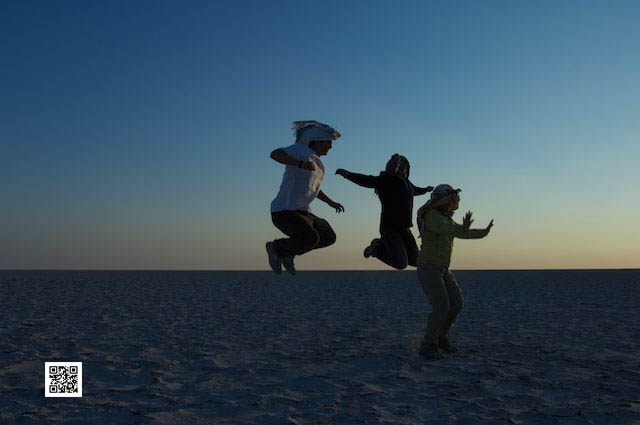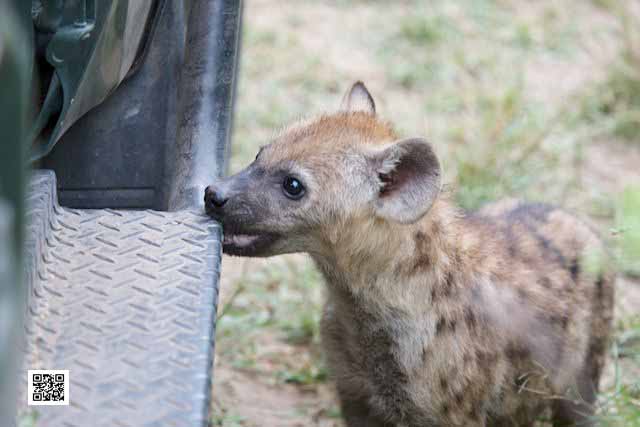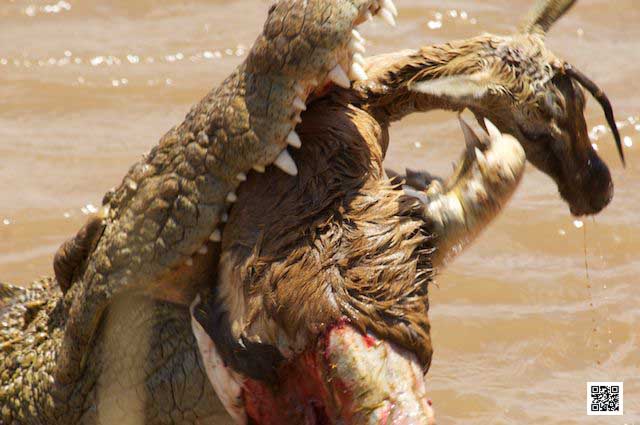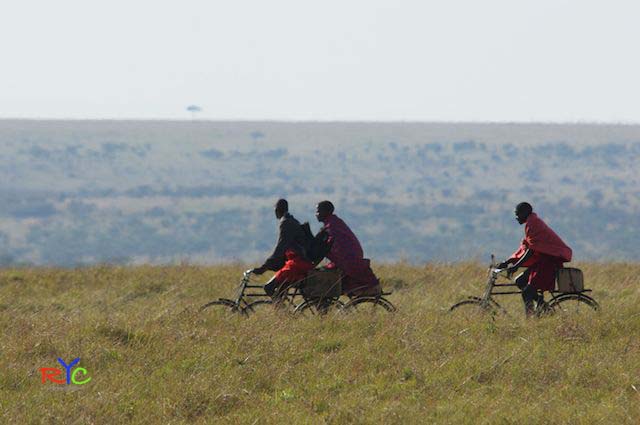08 July 2012
5 Tips for Choosing the Right Photo Course

Fortunately we live in times of blooming creativity and plenty of opportunities to learn creative crafts like painting, sculpturing, cooking, photographing, gardening, app creating and many more. But it’s sometimes hard to find the right course and setting to learn and to get the most out of it. Here some pointers to help identifying a good course. They apply not only to photography, but also to courses in general.
- Make sure the course is about the students and not about the teacher. That means it stimulates the creativity of the students and enables them to develop their own style, guided by the teacher.
- Make sure the group is not to big or even go for individual training if it suits your purpose. Small groups provide more attention and space for individual questions and needs.
- Make sure you feel safe in the group. It’s a creative course and you will show yourself through your work. You will flourish and grow, if you feel safe to show your work and ask questions.
- Make sure you like the course environment incl. location, people, services and other facilities. That will stimulate your creative work and growth.
- Make sure it is fun. Fun makes us learn easier and learning enjoyable.
You might think, but I will know all these things only when I’m already in the course. Think back when you did courses in the past. Didn’t you have the right feeling about it already from the moment you booked it? Trust your intuition and you will have a great photo course, cooking classes, painting sessions or any other creating adventure you want to embark on.
Enjoy creating!
Ute Sonnenberg, www.rohoaychui.com
How Many Photo Equipment does One Need on Safari

Many people go ones in their life on a safari and want to make sure they come home with lovely images. That puts a lot of pressure on the one who is responsible for the photography and one can easily end up buying all equipment possibly necessary, just to make sure to have it in case they need it. There is an overwhelming amount of equipment available and its really hard to make the right choice, but you got to make a choice and if its only for the luggage allowance on the flights.
If you are an entry-level hobby photographer, the best you can do is having a bridge type of digital camera with you with a good zoom and a relatively good speed. The biggest problem of the point and shoot cameras is their speed. They are often to slow to capture the moment and the animal is gone. Bringing that good bridge model to start with is a good choice for the less ambitious hobby photographer. No further photo equipment needed.
The more ambitious photographer with an entry level DSLR and interchangeable lenses gets already confronted with more choices. There are flowers and small animals that make great subjects, there are landscapes and there are the elephants on the water whole. For all three different situations are different lenses and the best thing to do would be to bring a macro, a wide angle and a zoom lens. But in reality one ends up not really using the macro lens when focusing on wildlife, unless macro is a specialty of the photographer and he/she will focus on small animals and objects. So, in general the wide angle and the zoom lens will be enough to bring. This lens choice can also apply to the more advanced and ambitious photographer. The next question is the tripod. A tripod is great for low light situations or night photography, but not essential for wildlife photography. A beanbag is the better choice. There is limited space in the vehicle, one needs to be flexible for the always-moving objects and night photography is not really happening. Get a beanbag.
The photographers with the more advanced cameras and lenses have a difficult task in making a decision. The beautiful fixed 400mm/500mm/600mm lenses are great, but they are also heavy, not flexible, need a tripod or monopod to be handled and require space. Already the transport on the international flight and definitely on the safari flight is challenging. But the main concern is their flexibility. In many places the animals are very close to the vehicles and the big lens cannot be used. So, one needs at least two cameras to have a more flexible lens on the other body to capture also these moments. If you want to bring all this great equipment, be prepared to have a private vehicle in order to manage it while being on safari. Also special arrangements for the transfers and flights might be necessary.
Whatever your choice will be, keep in mind to have a fast camera with a fast processing memory card, a minimum 400 mm zoom lens when shooting full frame and a beanbag. These essentials will serve you well when going out to shoot great photos of wildlife, yet having a relaxed safari and easy transportation.
Enjoy preparing for a great trip!
Ute Sonnenberg, www.rohoyachui.com
What to Think of When Photographing in Adventurous Places
11/07/12 16:05 Filed in: Photography & Art | Travel & Inspiration

One doesn’t need to go on a photo safari in Africa to end up in adventurous situations. A big event in your hometown can be already enough or a sports event with mountain bikers flying around your head. Actually photographing in familiar places and situations can sometimes be even more dangerous than on exotic locations or in the bush. Familiar situations let us drop our guard easily and then we step backwards into a gutter, fall of a wall, get equipment stolen or misjudging how many things we can do at the same time and loosing it. Well, making mistakes of this kind can be annoying, inconvenient and sometimes painful, but not so quickly life threatening. Making mistakes in the bush and in unfamiliar cultures can have larger consequences. But all boils down to watch your back and if you can’t do that yourself, get somebody to do it for you.
When we look through the viewfinder or on the screen of our camera we get drawn into the photo we want to take. All our attention is on photography and we hardly see and hear what is going on around us. We somehow block out the world in order to focus on what we see and capture. The situation is similar to listening to the iPod while riding a bicycle on the streets or sending a sms while driving a car.
For that reason, photographers in war zones and other dangerous places have guides with them and sometimes security guards to make their work possible. In the bush, one if not familiar with the environment, has a ranger and often a tracker with them. They find the animals and they take care of the safety. It might sound silly to remind people of “do not step out of the vehicle”, but unfortunately they forget and do it to get closer to the lion for a better shot. That only provides dramatic photos to the people who witness the moment and often ends the life of the other person. One might be tempted to think, how can you be so stupid, but be aware that being in the bush and seeing these animals can mix up very much someone’s mind and emotions. People don’t realize at that moment where they are and the animals look just like on TV and reality and fiction become one and fatal.
Always be conscious where you are, what is going on around you, have somebody to cover your back and have a guide when unfamiliar with the surroundings. Listen when the guide tells you to stay in the vehicle. Walking the streets of New York is different from walking the roads of the Masai Mara. Both are safe as long as you know the rules and follow them.
Be conscious and mind your guard. Bring jaw dropping beautiful images of your trip home and not images of yourself that could make the front pages.
Happy snapping!
Ute Sonnenberg, www.rohoyachui.com
How to Plan and Book Your Photo Safari
10/07/12 15:15 Filed in: Photography & Art | Travel & Inspiration

First things first, how do you know you want to go on a photo safari? Did somebody ask you to join them or did you think lets do something different this year or were you always interested in wildlife and now you can’t wait to see it yourself? By answering this question you set the first step to choose the right destination, accommodation and mode of transport.
When you join somebody everything is usually already decided and arranged. You only step in.
When you think of doing a holiday just in a different way, than you should make a list what you want to see, experience and what is important to you regarding standard of accommodation and transportation. You might like to do a combination of safari, culture/lifestyle and beach to get an impression of Africa’s diversity. For that purpose you should choose a safari destination that offers excellent sightings, easy access and comfortable accommodation. You will travel quite a lot during that holiday to see and experience all the different places and activities, so easy access is important to not loose time and energy. The safari will be only one activity you are doing during the trip, so you want the best, preferably seeing the Big 5 within a few days before moving on to climb a mountain or to enjoy the beach. For that purpose a fly in safari to a Private Game Reserve or great areas as the Masai Mara and the Okavango Delta will be the best options. Check what vehicles the camp/lodge is using and if trained drivers/rangers are available. Be aware that travelling in Africa is different from other places. If you think about booking it yourself on the Internet you can make big misjudgments in planning distances, travel time, accommodation and game drive quality. Rather get somebody to help and advice you with that.
When you want to go on safari and only on safari to enjoy photographing the great wildlife, your photo safari options get broader. You can choose for a variety of wildlife areas, even with different countries in one trip, depending on the time you have available. There is no need to rush things and plenty of opportunity to see the very diverse national parks and reserves with different and rare animal species. For this kind of photo safari it is great to have your private 4x4 Jeep with an allocated driver/guide for the entire stay. It provides the ultimate bush experience and allows you to go on game drives when you want and for how long you want. You got the freedom to make your own plan. Also for this kind of safari the same advice applies. Get somebody to help you with the planning and booking. Distances in Africa are measured in hours, not in kilometers and not knowing the rules of the bush can get you in difficulties. Having your private vehicle can be combined with simple camping or 5 star lodges, depending on the budget for the trip. It demands more time through travelling by car between the wildlife areas, but with the opportunity to see more of the country.
Last but not least, ask yourself what animals you want to see. In some areas it’s easy to see the big cats in others to see elephant. Think about it when you plan the trip, that you don’t end up in an area where leopards are hardly see with the idea to photograph them.
Happy planning.
Ute Sonnenberg, www.rohoyachui.com
Dare to Be Different, Think Different and Photograph Different
09/07/12 15:04

We all might have experienced situations in classrooms, workshops, trainings, clubs or online platforms where we felt insecure about our opinion, artwork, knowledge or homework when asked to present it to the group. Nobody wants to be rejected or criticized badly in public. That’s the moment we might consider to present artwork, papers or opinions we think the others want to see and hear. The price we pay for that is our own identity and repressing our own creativity, strength and growth. Going with what the crowd expects might seem the easier way of doing things in the first place, but on the long run creativity will die and with it joy, satisfaction, motivation and success. It’s not an easy decision to make and the following example shows what a pressure can be put on the shoulders of a photographer and how one can also crumble under its weight.
The photographer Joe Klamar was asked to photograph portraits of the US Olympic Team and when his images went public a storm of negative criticism hit them and him. Yes, they do not look like adverts and one does not expect them to be in magazines, but would the reaction had been the same when the images would have been shown in a gallery exhibition? Maybe “we” expect to see advert like images when we read that there are portraits of the US Olympic Team and then we don’t see advert like images, but art. This can be experienced as controversial and his work definitely triggers something when looking at it, but is it not what art is supposed to do?
In the first place Joe Klamar responded to the criticism that he was not shooting a Nike ad. A few days later he explained that he had not the right equipment with him when he was asked to do the shoot and that would explain the image quality. Had the pressure piled up and did AFP, he is working for, ask him to give this statement?
His images unleashed a storm and one should ask why such a storm came up. Somebody choose his own way of photographing the subjects and his way was different from the usual. Then the “usual” hit back and wants to make sure that the one who dared to be different gets drawn back into the crowd.
Would Apple have become Apple by allowing this to happen? Dare to be different, think different and photograph different and find some inspiration here.
Ute Sonnenberg, www.rohoyachui.com